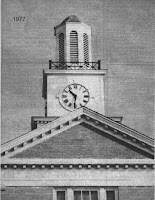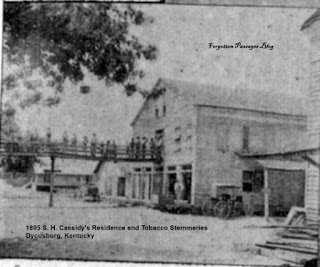February 1, 1929
In the late part of the summer of 1928, Hollis C. Franklin, wrote
some descriptive lines which he called
"Summer Time in Old
Kentucky." The lines first appeared in a daily paper, which has
a wide circulation in this section, and were later copied by
different papers and magazines.
A few days ago these same lines were
recorded by one of the biggest talking machine companies in the world
and within the next few weeks will be advertised in practically every
music store in the United States.
The music for "Summer Time in Old Kentucky" was written
by Miss Adelyne Hood, who writes under the non de plume of Betsy
White. Miss Hood is a well known Victor recording artist and her
violin records have had an unusual sale on different makes of
records.
Miss Hood also wrote the music for "Ohio River Blues"
which was written recently by Mr. Franklin and which has been given a
number of times during the last few week on the Dalhart program over
WJZ and associate stations.
Of particular interest to Marion people is the fact that the
author of the song is Hollis C. Franklin, assistant cashier of the
Farmers Bank and Trust Company. Mr. Franklin recently sold the
phonograph rights to this song, and since that time local people have
awaited with a great deal of interest the arrival of the first of the
records in Marion.
Readers of the Press who are radio fans will listen with a good
deal of interest for the singing of "Summer Time in Old
Kentucky" by Vernon Dalhart who is one of the most popular
present day recording artists. He has recorded more than
seventy-five songs for the Victor Company and has made many records
for Edison, Columbia and other companies.
When he sings of old Kentucky one almost decided that even the
cold, dark, damp, dreary days of winter are worth while when they
bring us the spell of a Kentucky summer when "Old mother
nature's laughin' loud."
Here are the lyrics of the poem, turned into a song.
Summer Time in Old Kentucky
When It's summer time in old Kentucky,
Dear old Mother nature laughs out loud;
Joy just seems to bubble over me,
By myself or in a crowd.
As the evening shadows gather 'round me,
While I sit beside the cabin door,
And when the stars up in the skies
Start to wink their diamond eyes,
Then I know it's summer time once more.
Now if you want to make me happy,
Sing of my Kentucky land,
Where all the joys in heaven and earth
Join in one big band.
I may go visiting in between,
But when I come to die,
I hope it's summer time in old Kentucky
On the day I say goodbye.
Mr. Franklin missed his wonderful days of summer when he passed away, for it was on a cold day Dec. 2, 1958. He is buried in Mapleview Cemetery here in Marion. His wife, Nina Jane Paris Franklin is buried next to him.









































